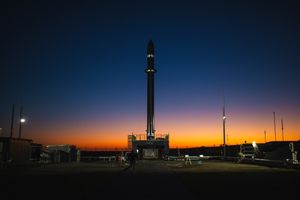Akoya Biosciences’ Technology Enables Queensland Spatial Biology Centre to Revolutionize the Diagnosis and Treatment of Cancer and Other Diseases
MARLBOROUGH, Mass., Jan. 18, 2024 (GLOBE NEWSWIRE) -- Akoya Biosciences, Inc., (NASDAQ: AKYA), The Spatial Biology Company®, today announced that the newly established Queensland Spatial Biology Centre (QSBC), located in Brisbane, Australia, is using the PhenoCycler-Fusion spatial biology platform as the core technology to revolutionize the way cancer and other debilitating diseases are diagnosed and treated.
The PhenoCycler-Fusion platform facilitates the understanding of the cellular compositions, neighborhoods, and functional states that are present in complex diseases, and that next generation therapeutics may be able to target. Bringing a new level of clarity to this complex biology will help explain why individual patients have varying degrees of success in terms of their response to treatment.
“Akoya’s industry-leading spatial biology platform is enabling our experts to rapidly map the presence, location, phenotype, and interaction of millions of cells,” said Professor John Fraser, Clinical Director and co-lead of the QSBC. “This ability represents a significant leap forward in the effort to more accurately diagnose a wide range of diseases, map pathways for highly personalized treatment, and ultimately improve patient outcomes.”
With multi-slide automation, the PhenoCycler-Fusion system enables researchers to generate ultrahigh-plex spatial phenotyping data for larger and more complex samples at unprecedented speed and scale. Studies conducted using the platform reinforce the value of single-cell ultrahigh-plex spatial phenotyping as a powerful tool for defining spatial tissue signatures associated with therapy response and resistance.i
"We are extremely excited to be an integral part of this important initiative," said Brian McKelligon, Chief Executive Officer of Akoya Biosciences. “The QSBC has brought together a remarkable group of researchers, clinicians, pathologists, and computational biologists who are unrelenting in their commitment to leverage the enormous power of spatial biology. Their passion is inspiring and we look forward to supporting them with the most advanced spatial biology solutions.”
The hospital-based QSBC initiative is led by the Wesley Research Institute in conjunction with other medical and research organizations. Among the benefits of this network of organizations is access to an extensive biobank of curated patient tissue samples that are amenable to deeper tissue and cellular annotation through the QSBC. The Centre also collaborates with laboratories at Harvard Medical School, Yale University, and St. Jude’s Children’s Research Hospital in the areas of protocol development, assay optimization, and data analysis.
“Spatial biology is revolutionizing the pathology field by enabling deeper biology and clinical markers to be measured from a single tissue section,” said Dr. Arutha Kulasinghe, QSBC Scientific Director and co-lead. “Digitizing tissues is likely to lead to new fields in spatial informatics and data analysis where machine learning and predictive biomarkers can be rapidly developed and deployed to personalize therapies.”
A video about the QSBC can be viewed here: https://www.youtube.com/watch?v=6ZcHWpqYJoM
Forward-Looking Statements
This press release contains forward-looking statements that are based on management’s beliefs and assumptions and on information currently available to management. All statements contained in this release other than statements of historical fact are forward-looking statements, including statements regarding our expectations about the potential of our products and services and other matters regarding our business strategies and plans and objectives for future operations.
In some cases, you can identify forward-looking statements by the words “may,” “will,” “could,” “would,” “should,” “expect,” “intend,” “plan,” “anticipate,” “believe,” “estimate,” “predict,” “project,” “potential,” “continue,” “ongoing” or the negative of these terms or other comparable terminology, although not all forward-looking statements contain these words. These statements involve risks, uncertainties and other factors that may cause actual results, levels of activity, performance, or achievements to be materially different from the information expressed or implied by these forward-looking statements. These risks, uncertainties and other factors are described under "Risk Factors," "Management's Discussion and Analysis of Financial Condition and Results of Operations" and elsewhere in the documents we file with the Securities and Exchange Commission from time to time. We caution you that forward-looking statements are based on a combination of facts and factors currently known by us and our projections of the future, about which we cannot be certain. As a result, the forward-looking statements may not prove to be accurate. The forward-looking statements in this press release represent our views as of the date hereof. We undertake no obligation to update any forward-looking statements for any reason, except as required by law.
About Akoya Biosciences
As The Spatial Biology Company®, Akoya Biosciences’ mission is to bring context to the world of biology and human health through the power of spatial phenotyping. The company offers comprehensive single-cell imaging solutions that allow researchers to phenotype cells with spatial context and visualize how they organize and interact to influence disease progression and response to therapy. Akoya offers a full continuum of spatial phenotyping solutions to serve the diverse needs of researchers across discovery, translational and clinical research: PhenoCode™ Panels and PhenoCycler®, PhenoImager® Fusion and PhenoImager HT Instruments. To learn more about Akoya, visit www.akoyabio.com.
About The Wesley Research Institute
The Wesley Research Institute (WRI) is a leader in health and medical research, prioritizing person-centered approaches to improve community well-being. The WRI is renowned for its innovative and ethical research methodologies. Collaborating closely with UnitingCare Queensland, WRI bridges the gap between cutting-edge research and practical patient care, benefiting diverse communities across urban and regional Queensland. This synergy ensures that WRI’s research advancements translate directly into enhanced health outcomes for individuals and families.
Akoya Biosciences Investor Contact
Priyam Shah
Sr. Director, Investor Relations
investors@akoyabio.com
Akoya Biosciences Media Contact:
Christine Quern
(617) 650-8497
media@akoyabio.com
i Jhaveri N, et al. Mapping the Spatial Proteome of Head and Neck Tumors: Key Immune Mediators and Metabolic Determinants in the Tumor Microenvironment. GEN Biotechnology 2023 2:5, 418-434

More News
View More



Recent Quotes
View More
Quotes delayed at least 20 minutes.
By accessing this page, you agree to the Privacy Policy and Terms Of Service.